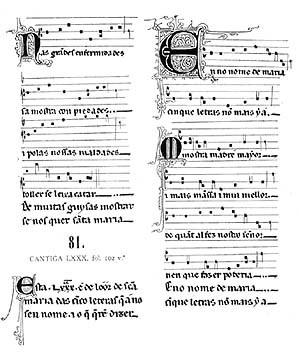Song, especially the monophonic song of the Middle Ages with Latin, sacred, nonliturgical, strophic text, often with a refrain. See also Cantio sacra.
Category Archives: Uncategorized
primo, secondo [It., first, second]
modal notation
double concerto
A *concerto for two solo instruments and orchestra.
Hob
accelerando, accelerato [It.]
linear counterpoint
In the writings of Ernst Kurth (Grundlagen des linearen Kontrapunkts, Berne: M Drechsel, 1917) and since, a phrase that stresses the identity and character of individual lines making up the contrapuntal fabric, thus tending to subordinate the harmonic or vertical dimension.
prima donna [It.]
The singer of the principal female role in opera, or the leading female singer in an opera company. The corresponding male designation, less frequently used, is primo uomo. The term was in use by the middle of the 17th century, spurred on, it has been conjectured, by the development of public opera houses. It connotes a performer of overbearing temperament and arrogance. Terminology for the hierarchy of singers has at times been subject to an inflation resulting in the use of terms such as prima donna assoluta (absolute first lady) or diva (goddess).
ballabile [It.]
calando [It.]
Decreasing in loudness and often also in tempo.





